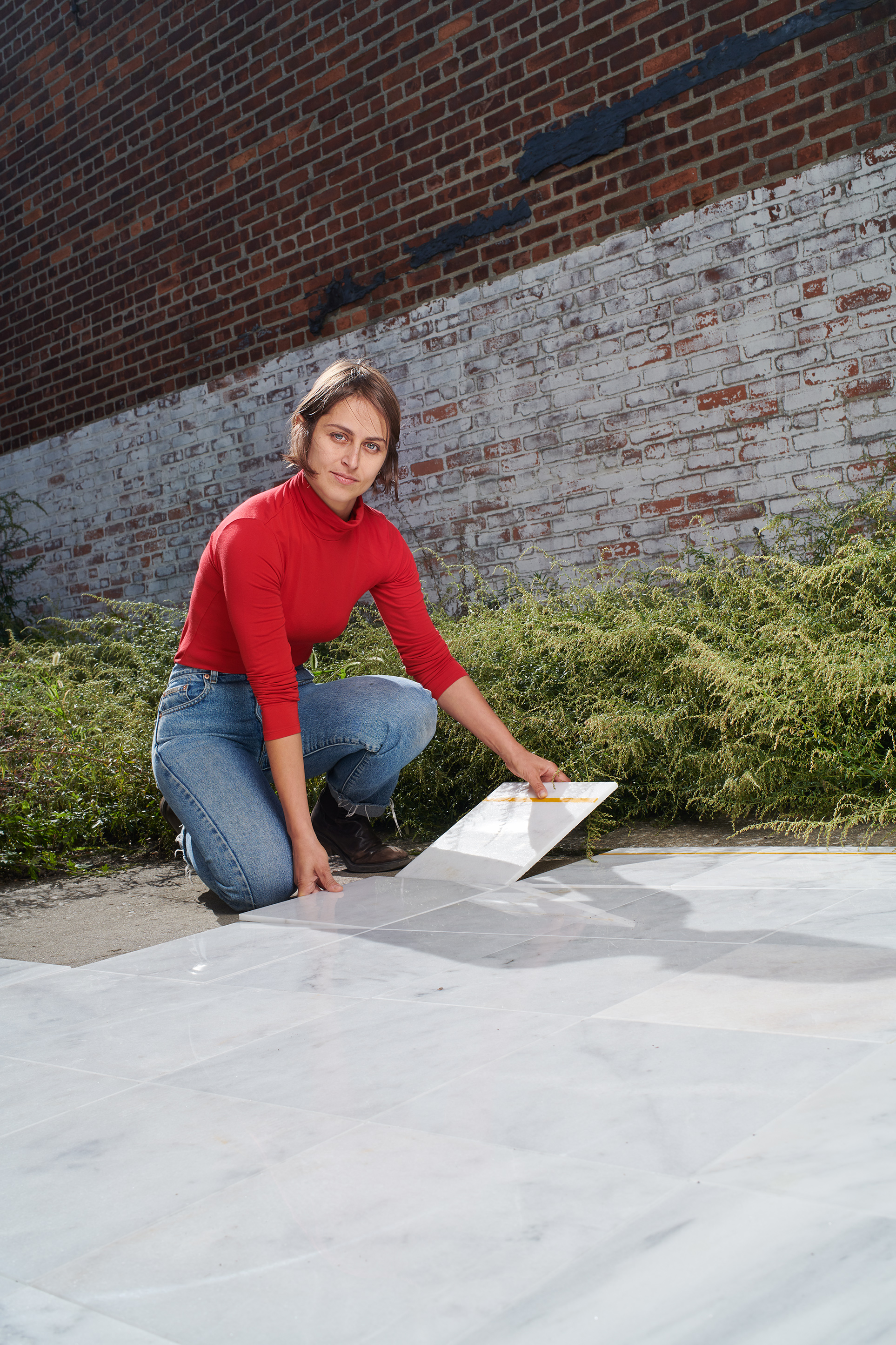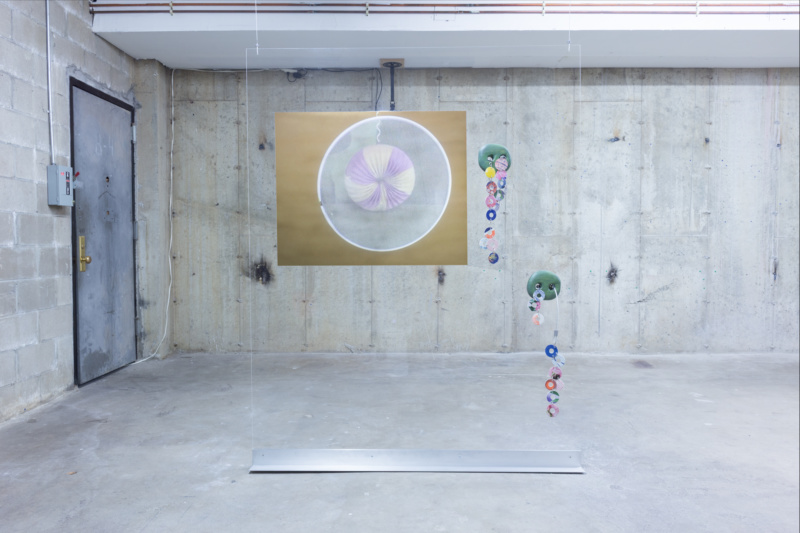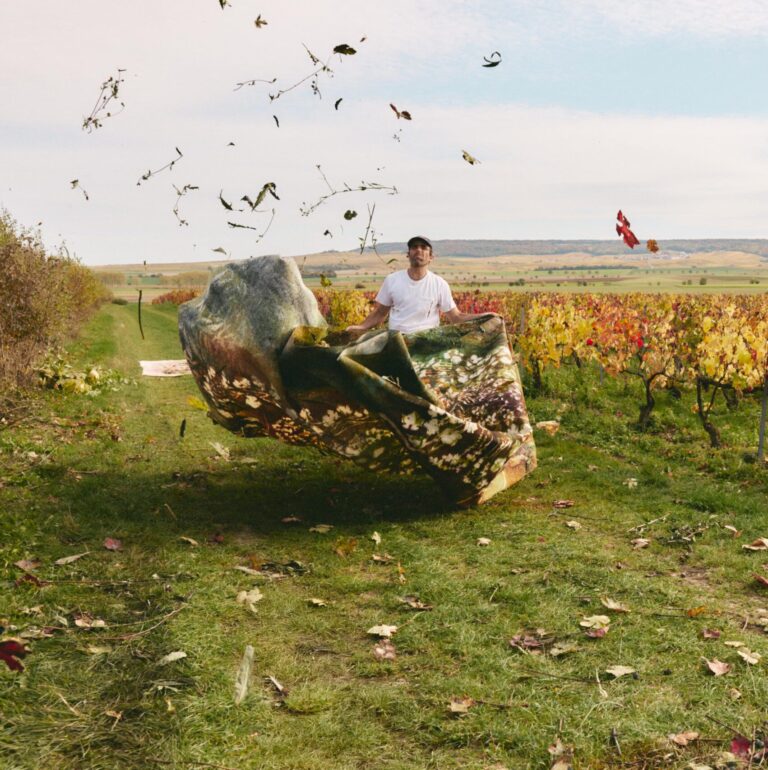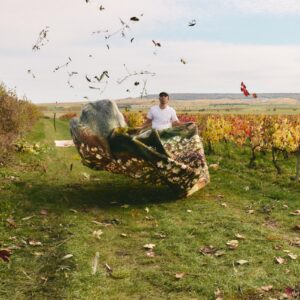
Floating and disembodied, two hands grope at an object at once familiar and unplaceable. The plush torus at the center of the video’s frame seems too small to be a cushion for sitting, and perhaps too strange to be household decor. Grasping the object from two sides, the hands knead the fabric covering, pushing alternating segments of citrine and dull fuchsia inward, toward the central orifice around which everything puckers. The colors shift and pulsate; the viewer is drawn in. Much of the artist Alina Tenser’s work is like this: an object is manipulated, the eye is deceived.
How does the world avail itself to us? Relevant is the psychologist James J. Gibson’s theory of affordances, which addresses the ways an object’s form can suggest to a user how to interact or function with it. Knobs ask to be turned, handles ask to be grasped, switches asked to be flipped. The design of the objects populating our environment is a subtle choreography: whether we are aware of it or not, forms tell us what to do, governing our movements.

As in Kismet Tutorial, 2016, Tenser’s sculptural objects belie their capacities, or are wryly diverted from normative use. In videos, abetted by chroma key (or “green screen”) technology, objects and body parts sometimes float or move unexpectedly. At once animate and wily, they slip the noose of expectation. Often, the visual pleasure of Tenser’s work is found in its canny reversals: inside becomes outside, volume becomes surface, or void becomes protrusion.
In the pleasantly overgrown backyard of her studio in Maspeth, Queens, Tenser is preparing for “Marble on Marble,” her upcoming solo show at New York’s 17ESSEX gallery, which opens January 11. She uses hand tools to incise shallow lines in marble tiles purchased from a big-box home improvement store. Into these grooves she then pours sallow-colored rubber and lets it set. Like yellow lines separating drivers headed in opposite directions, the bands of ochre disrupt and demarcate the mottled grey planes; as perceived by the bottoms of the artist’s feet during performances, the tacky rubber surface feels distinct from that of wintry stone.

In a performance, Tenser occupies a miniature stage comprised of four tiles. While rotating them with her feet, she turns an aluminum spool in her hand. The movement is intimate, and appears as if unconscious—like the anxious fidgeting with a cap or straw at the table. Lengths of acrylic string are unwound, set free from the spool; they are then threaded into hardware store D-rings that sprout from the artist’s costume. As she sews and tangles herself, gravity does its work, creating an unexpected symphony: marble beads clack against one another or against the marble tiles.
Another series of marble tablets conjure hand-held gaming devices, slightly oversized. Some are mounted on the walls, some lean between wall and shelf, others lay flat atop tables. They too bear linear incisions, as well as jutting aluminum fins. Scattered among these parallel and perpendicular lines are small marbles of different colors or little melon-scooped pockets that suggest a marble’s absence. Looking at them, one tries to discern their logic, only to be flustered. The conflicts between a thing’s form and the possibilities for its function—or dysfunction—are central to Tenser’s artmaking, which turns on the erotics of our prehensile condition. I am invited in. I place the soft pad of my fingertip in the concave impression—what can I say, I couldn’t resist.










 in your life?
in your life?

